In American history, the Antebellum period refers to the aftermath of the War of 1812 to the onset of the Civil War (1861-1865), which was marked by the institution of slavery, an oppressive racist system that impacted every aspect of life for enslaved individuals, specifically of African descent. Within this dark chapter, childhood – a time that is often associated with innocence, wonder, curiosity, and carefree living – was filled with hardship, uncertainty, broken family bonds, loss of agency and innocence for those who were born into slavery. Such inescapable destiny was forced by law (partus sequitur ventrem) onto children who were doomed to “follow the condition of the mother” (Chapter 7 “The Lover”, Jacobs) if she was a slave. Even if the father was a free black man, even if the father was white, “the offspring are unblushingly reared for the market (Chapter 9 “Sketches Of Neighboring Slaveholders”, Jacobs) which allowed the maintenance of the cycle of free human surplus in the system.
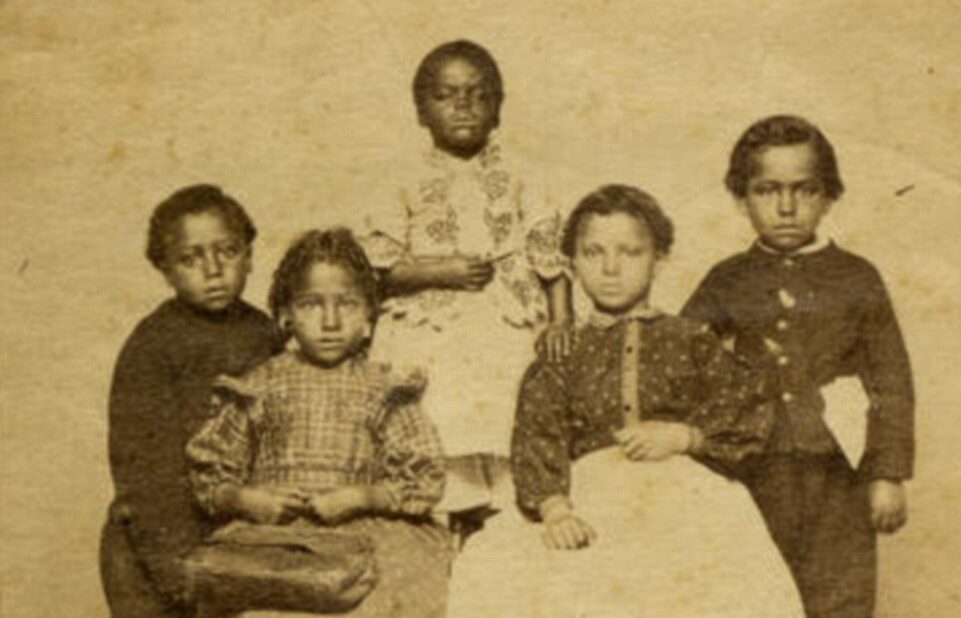
Five former slave children in 1860. Since slave children were not fully functional workers, they were given smaller rations than adults and sometimes not even given clothes. It appears not to have been an unusual sight to see naked children on plantation and even when clothing was provided, it was rarely replaced as they got older. From News Dog Media
Through the narrative of Harriet Jacobs “Incidents in the Life of a Slave Girl,” we are introduced to the first-hand experience and heart-wrenching story that explores the tragic realities faced by enslaved children, whose mothers were “considered of no value, unless they continually increase[d] their owner’s stock. [Women were] put on a par with animals” (Chapter 9 “Sketches Of Neighboring Slaveholders”, Jacobs) as a breeding tool, and their newborn child would simply be an addition to [their master’s] stock of slaves” (Chapter 11 “The New Tie To Life”, Jacobs).
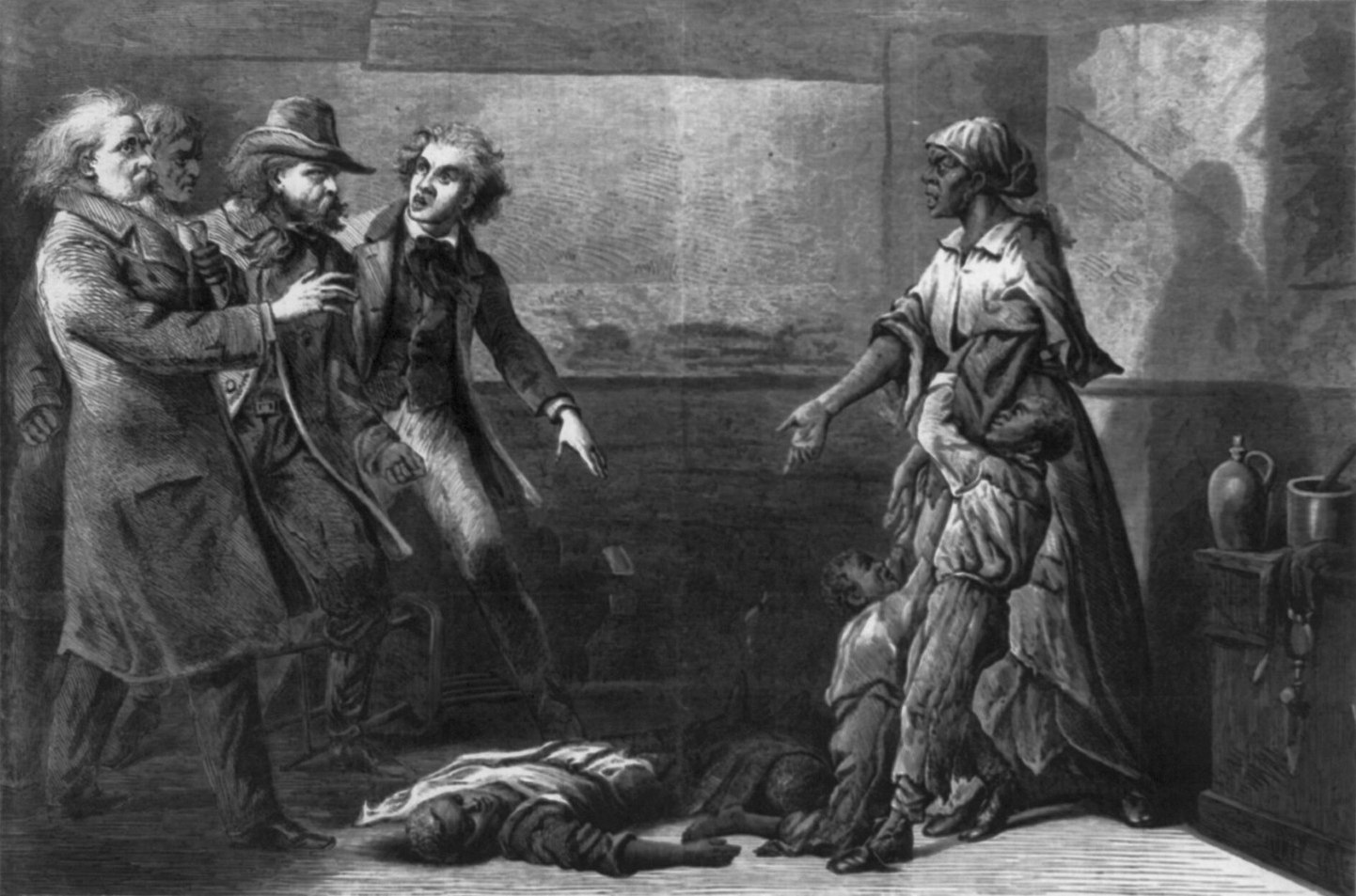
The Modern Medea (1867), an illustration of Margaret Garner, an escaped enslaved African American who in 1856 killed her daughter to ensure she was not returned to slavery
In the third chapter “The Slaves’ New Year’s Day,” Jacobs refers to the New Year’s period, a time when a free woman is “happy” as there is nothing that can take her apart from her children but death. However, “the slave woman instead wishes to be dead, knowing that she can be parted from her children”. Jacobs mentions a woman whose “wild, haggard face” she could not forget, whose seven children were cruelly sold far away, leaving the mother in a state of perpetual anguish, helplessness, and uncertainty. This separation of families, a common practice during slavery, represents a profound rupture of the natural bonds that tie parents and children together. The pain inflicted by such acts of separation cuts deeper than any physical wound, leaving lasting emotional scars and robbing enslaved individuals of the joys and comforts that should be inherent in the parent-child relationship.
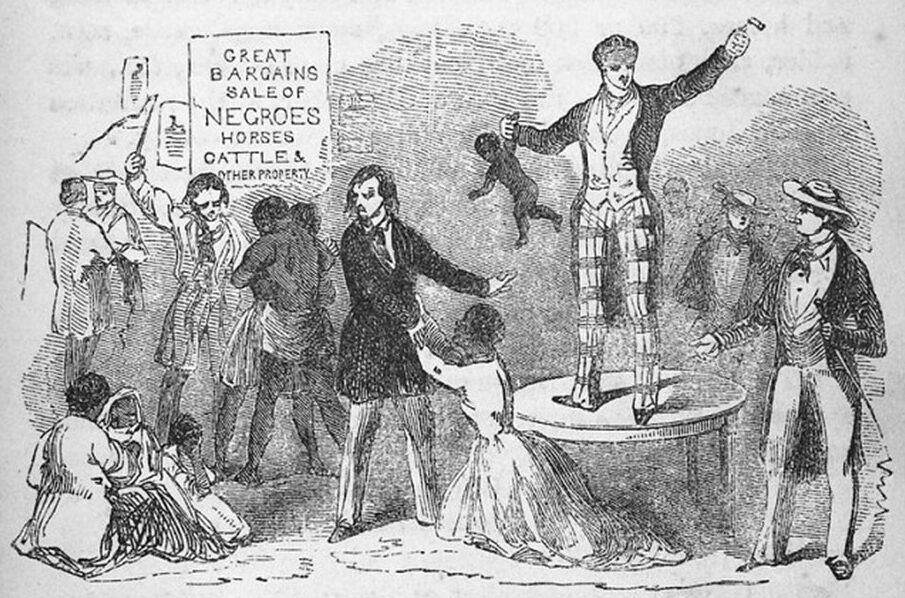
To Remake the World: Slavery, Racial Capitalism, and Justice — By Walter Johnson » slave-auction-husbands-wives-families-sold-separated-910×512
The loss of innocence lays in the dehumanizing nature of slavery. If an enslaved individual wanted to be free, they had to “purchase [their] freedom” (Chapter 2 “The New Master”, Jacobs), which is nonsensical as it denies individuals their inherent rights and freedoms. People were considered commodities, bought and sold as property, with no control over their own lives or the lives of their loved ones.
As Jacobs recounts her experiences, she portrays the forced transition from childhood to a harsh and unforgiving adulthood. At 15, like many other enslaved girls, she is thrusted into a world where her body and autonomy are violated. Jacob’s master told her that she “must be subject to his will in all things”, […] and [s]oon she will learn to tremble when she hears her master’s footfall. She will be compelled to realize that she is no longer a child. If God has bestowed beauty upon her, it will prove her greatest curse” (Chapter 5 “The Trials Of Girlhood”, Jacobs).
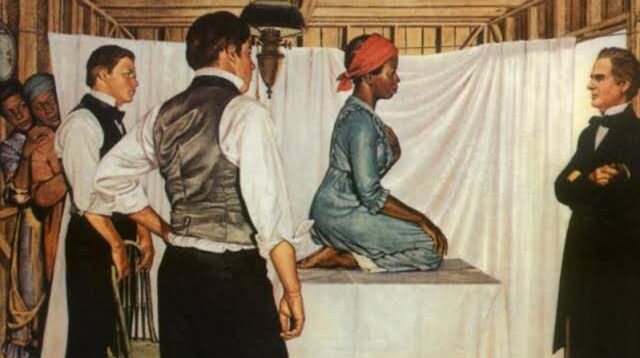
This 1952 painting by Robert Thom is the only known representation of Lucy, Anarcha and Betsey. Pearson Museum, Southern Illinois University School of Medicine
The relentless and coercive attempts to violate Harriet Jacobs’ body, coupled with the conflicting emotions of shame and resistance, vividly illustrate the profound loss of innocence imposed upon her against her will. Her master’s pressure to submit and her grandmother’s disappointment in losing Jacobs’ purity compound the anguish she endures. Jacobs powerfully expresses her sense of despair, stating that “nothing seemed more dreadful than [her] present life.“ (Chapter7 “The Lover”, Jacobs). In Chapter 9, “Sketches Of Neighboring Slaveholders,” Jacobs writes:
“No pen can give an adequate description of the all-pervading corruption produced by slavery. The slave girl is reared in an atmosphere of licentiousness and fear. The lash and the foul talk of her master and his sons are her teachers. When she is fourteen or fifteen, her owner, or his sons, or the overseer, or perhaps all of them, begin to bribe her with presents. If these fail to accomplish their purpose, she is whipped or starved into submission to their will.“
This further sheds light on the atmosphere of licentiousness and fear in which enslaved girls are raised. Their masters and overseers exploit their vulnerability through bribery, punishment, and coercion, further eroding their innocence and subjecting them to a life of degradation and submission.
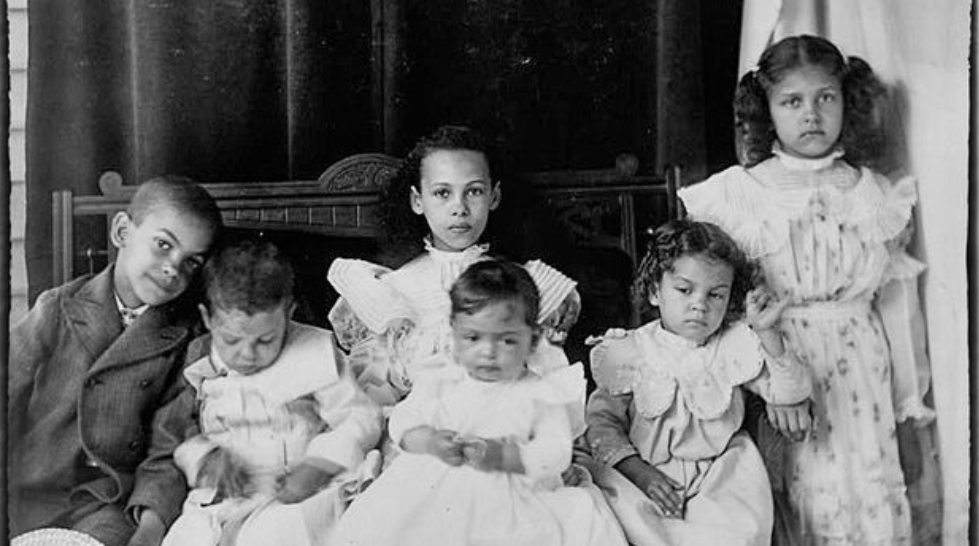
African American children posed for Porch Portrait in Georgia in 1899. Daniel Murray Collection (Library of Congress)
In conclusion, Harriet Jacobs narrative “Incidents in the Life of a Slave Girl” highlights the profound loss of innocence endured by enslaved children during the Antebellum era. Her story is a stark testament to the urgent need for justice and the dismantling of systems built on racism and oppression. Through understanding and acknowledging this painful history, we can strive to create a more just and equitable world, where the wellbeing of all children is protected and cherished.
To learn more about the unique experiences of Black women during slavery, please watch the video below.



Often when I read and think about what childhood for enslaved children was like in the antebellum south it is hard for me to wrap my head around it. It says a lot about a society that can enslave, abuse, and oppress the most vulnerable among us, children, due to racism and profit. I feel like the way we think about childhood today cannot be the same way we view childhood in the antebellum south. In many ways enslaved people never had a childhood, because how can one ever really live a childhood while in extreme oppression and forcible labor.
@selenanina
I agree with you completely. It is indeed difficult to comprehend how individuals, particularly when acting as a group, can display such cruelty, especially towards children. The motivations and mindset behind such actions are often deeply disturbing and hard to fathom.
I believe, open discussions about acts of cruelty serve an important purpose in our collective memory and help in preventing them from recurring. By acknowledging and discussing past atrocities, we raise awareness about the consequences of such actions and promote a deeper understanding of the factors that contribute to them. It also serves as a reminder of the importance of empathy, compassion, and respect in our interactions with others.
With all that said, through dialogue and education, I am convinced that we can work towards creating a society that values human rights, justice, and the well-being of allllll individuals.
Your analysis of how childhood was lived for young black children in the antebellum South really brings into perspective how even more fleeting childhood actually is when it cannot even be afforded to you as a courtesy as a human being. The forced maturity at a young age is damaging without a doubt, because what can you truly know about life and its pleasures when you’re forced to commit to such backbreaking labor without reward or rest?
I agree. Thinking of those times makes absolutely no sense as my mindset around humanity can not fit in such inhumane behavior, but then.. when I observe the events unfolding in the present day, I still struggle to process the ongoing instances of people inflicting harm upon one another.
Really thoughtful post! I agree with you when you say that the separation of families “represents a profound rupture of the natural bonds that tie parents and children together.” enslaved women were not only denied their freedom but they were also denied the opportunity to love and nurture their children. They were denied the opportunity to create a bond with their children and live a solitary life. This was a cruel exploitation that robbed them of being mothers and reduced them to being just enslaved women whose only goal should be to procreate children. Enslavers needed to find a way to keep slavery alive and in this process, slaves were robbed of their childhood, their motherhood, and their children. The whole idea of the loss of childhood makes me think of child sex trafficking which is a big problem in today’s society, and the most affected are poor families without enough resources.
It is a tragic reality that enslaved individuals were subjected to such injustice, robbing them of their childhood, motherhood, and the precious connections they could have formed with their children. Truly unimaginable harm that a lot of people prefer not to talk about.. But this is the history of this country economical success of which is based in immense suffering of real people and this cannot be ignored or forgotten.
The parallels you draw between historical events and the issue of child sex trafficking in today’s society are thought-provoking. It is disheartening to acknowledge that even in modern times, some families, particularly those lacking resources (and let’s ask why do they lack the resources!), continue to bear the brunt of problems that were considered normal not that long ago.
Reading this made me so sad. When Jacob’s would tremble from just the sound of her master’s footstep shows that she had to live her life with constant fear. This is so unfair that anyone had to go through this. She was forced to grow up too soon and never get to live her childhood.
I agree. It made me very sad too 🙁
She spared us a lot of details and I am sure some of the stories are far more disturbing then they are described as or appear to be.
Abigail Sabatier
Thu, Jun 15, 11:58 PM (4 days ago)
to me
The story of “Incidents in the Life of a Slave Girl” by Harriet Jacobs, which depicts the terrible realities endured by enslaved girls during the Antebellum era, is discussed in the text. It underlines how masters and overseers exploited, bought, and forced them out of their innocence. The conclusion urges justice and the overthrow of oppressive systems to safeguard the welfare of all children and build a more just society.
As the reading highlights, slavery in America was not just a labor practice, but it also involved the exploitation and abuse of women and girls. Harriet Jacobs’ “Incidents in the Life of a Slave Girl” is one such example that portrays the harsh realities of enslaved girls during the Antebellum era. It is disturbing to read about how these young girls were forced to lose their innocence due to the bribery, coercion, and exploitation of their masters and overseers. This narrative drives home the point that slavery was not just morally wrong, but it was also a deeply oppressive system that robbed individuals of their humanity. It is up to us to dismantle these oppressive systems and work towards a world where everyone’s well-being is protected, and we can ensure that all children, regardless of their background, can grow up in a safe and equitable world.